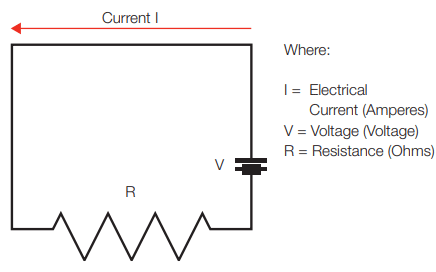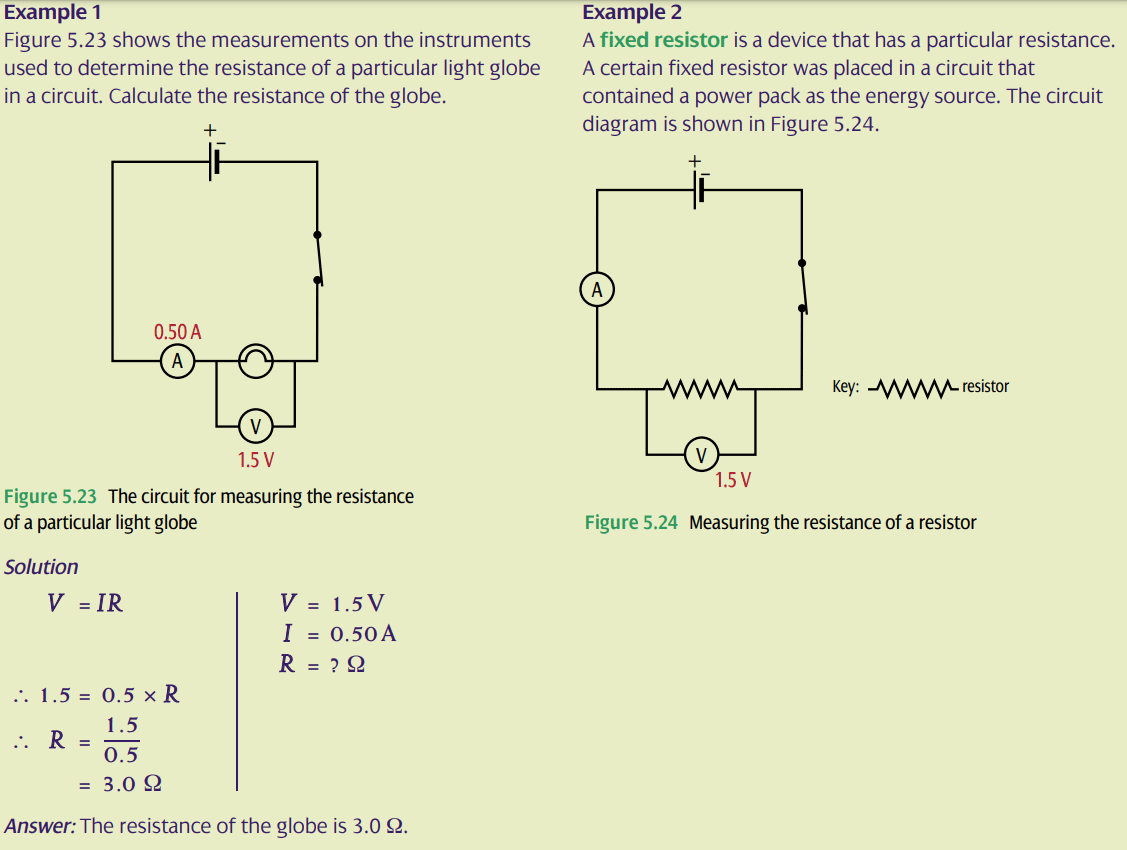Have you ever wondered what electrical resistance is and how it’s calculated? In this blog post, we will discuss electrical resistance in detail and teach you how to calculate it for any given circuit. Electrical resistance is an important electrical quantity that determines the amount of current flow through a device or material. Electrical energy is converted into thermal or heat energy when electrical resistance is present in a circuit, and this conversion results in a loss of electrical energy.
In order to calculate electrical resistance, we need to know two things: the potential difference (voltage) across the device or material, and the current flowing through it. The potential difference is simply the voltage drop across the device or material, and the current is the amount of charge flowing through it per unit of time. We will provide some examples so you can see how this works in practice. Stay tuned!
Table of Contents
- Electrical Resistance Definition
- How Does Resistance Work?
- What Causes Electrical Resistance?
- The Importance of Electrical Resistance
- Factors Influencing Resistance
- Electrical Resistance Formula – Ohm’s Law
- Measuring Electrical Resistance
- Electrical Resistance Symbols
- Common Applications of Electrical Resistance
- How Does Temperature Affect Electrical Resistance?
- Conclusion
Electrical Resistance Definition
Electrical resistance refers to a material’s opposition to the flow of electric current. It’s a fundamental property of conductive materials, such as metals and semiconductors, and is measured in units called ohms (Ω). Resistance is essential for controlling and managing electrical energy and, as such, is a critical consideration in the design and operation of electronic circuits and devices.
How Does Resistance Work?
At the atomic level, resistance occurs due to the interaction between electrons and the lattice structure of a material. As electric current flows through a conductor, electrons collide with the atoms within the material, causing them to lose energy. This energy is then converted into heat, which results in a reduction in the flow of electrons and, subsequently, a decrease in the electrical current. The greater the resistance, the more energy is lost as heat and the less current can flow through the material.
What Causes Electrical Resistance?
The electrical resistance of a material is caused by the movement of electrons. When an electrical current is applied to a material, the electrons within that material begin to move. However, they don’t all move at the same speed. Some electrons will collide with other atoms in the material, which slows them down. This process creates electrical resistance and reduces the current flowing through the material. The resistance decreases when the material is made of a better conductor, such as copper wire or silver. High resistance is experienced in materials such as glass or rubber.
The Importance of Electrical Resistance
Understanding and managing electrical resistance is essential for several reasons:
- Energy efficiency: Reducing resistance in electronic circuits and devices minimizes energy loss as heat, thereby increasing energy efficiency.
- Safety: Excessive heat generated by high resistance can pose a risk to both electronic components and users. Managing resistance can help prevent damage and ensure the safe operation of devices.
- Control: Resistance is key to regulating the flow of electrical current in circuits, enabling the creation of complex electronic systems and devices.
Factors Influencing Resistance
Several factors determine the resistance of a material:
- Material: Different materials have varying levels of resistance due to the arrangement and density of their atoms.
- Length: Longer conductors have higher resistance because electrons must travel a greater distance, increasing the likelihood of collisions with atoms.
- Cross-sectional area: A larger cross-sectional area results in lower resistance, as electrons have more paths through the material and fewer collisions occur.
- Temperature: Resistance typically increases with temperature, as higher temperatures cause atoms to vibrate more, increasing the likelihood of collisions with electrons.
Electrical Resistance Formula – Ohm’s Law
Electrical resistance is measured in units of ohms (Ω). The higher the electrical resistance of a material, the more it will resist the flow of electric current. For example, a thin wire has high electrical resistance because there are more collisions between electrons and atoms. A thick wire has low electrical resistance because there are fewer collisions.
Ohm’s Law is a fundamental equation in the study of electronics and provides a simple way to calculate resistance. The formula is:
V = I x R
Where:
- R is the resistance (in ohms)
- V is the voltage across the conductor (in volts)
- I is the current flowing through the conductor (in amperes)
By rearranging the formula, we can also calculate the voltage (V = I * R) and current (I = V / R) in a circuit.

Measuring Electrical Resistance
Measuring electrical resistance typically involves the use of a multimeter, a versatile instrument that can measure resistance, voltage, and current. To measure resistance, follow these steps:
- Turn off the power to the circuit
- Disconnect the component or section of the circuit you want to measure
- Set the multimeter to the appropriate resistance range (usually indicated by the ohm symbol, Ω)
- Connect the multimeter’s probes to the component or circuit section
- Read the resistance value displayed on the multimeter screen
Keep in mind that factors such as temperature, humidity, and contact resistance between the probes and the measured component can influence the accuracy of the measurement.

Source: Measuring Resistance, Juddy Productions
Electrical Resistance Symbols
The ohm (symbol: Ω which is the greek letter omega) is the unit of electrical resistance in the International System of Units (SI). It is named after Georg Simon Ohm, a German physicist. The SI unit of electrical conductance is the siemens (symbol: S), which is the reciprocal of electrical resistance in ohms.
Common Applications of Electrical Resistance
Electrical resistance is a key concept in various applications and industries, including:
Resistors
Resistors are essential components in electronic circuits, designed to limit current flow and divide voltage. They come in various types, such as fixed-value, variable, and thermistors, which change their resistance based on temperature.
Heating Elements
Heating elements in appliances like ovens, water heaters, and hair dryers rely on resistance to generate heat. As current flows through a high-resistance material, the energy lost as heat is used to increase the temperature of the element and the surrounding environment.
Sensors and Transducers
Resistance-based sensors and transducers measure physical quantities like temperature, pressure, and humidity by converting changes in resistance into electrical signals. Examples include thermistors, strain gauges, and resistive humidity sensors.
Voltage Regulation and Conversion
Voltage regulators and converters use resistance to maintain a constant voltage output or convert one voltage level to another. These devices are critical in ensuring the proper operation and performance of electronic systems.
How Does Temperature Affect Electrical Resistance?
Temperature affects electrical resistance in two ways: firstly, by changing the resistivity of the material, and secondly, by changing the length of the material. The resistivity is usually given at 20°C (68°F), but it can vary significantly with temperature. For most metals, the resistivity increases with temperature. This means that electrical resistance increases as well. However, for some materials such as semiconductors, the resistivity decreases with increasing temperature. This results in electrical resistance decreasing as well. The length of the material also changes with temperature, but this effect is usually much smaller than the effect of resistivity. For most metals, electrical resistance increases as the length of the material decreases (i.e. as it gets shorter).
Conclusion
Understanding electrical resistance is crucial for designing, operating, and maintaining electronic devices and systems. By considering factors like material, length, cross-sectional area, and temperature, engineers can optimize resistance to enhance energy efficiency, safety, and control in various applications. Whether working with resistors, heating elements, sensors, or voltage regulators, mastery of electrical resistance is essential for success in the world of electronics.


